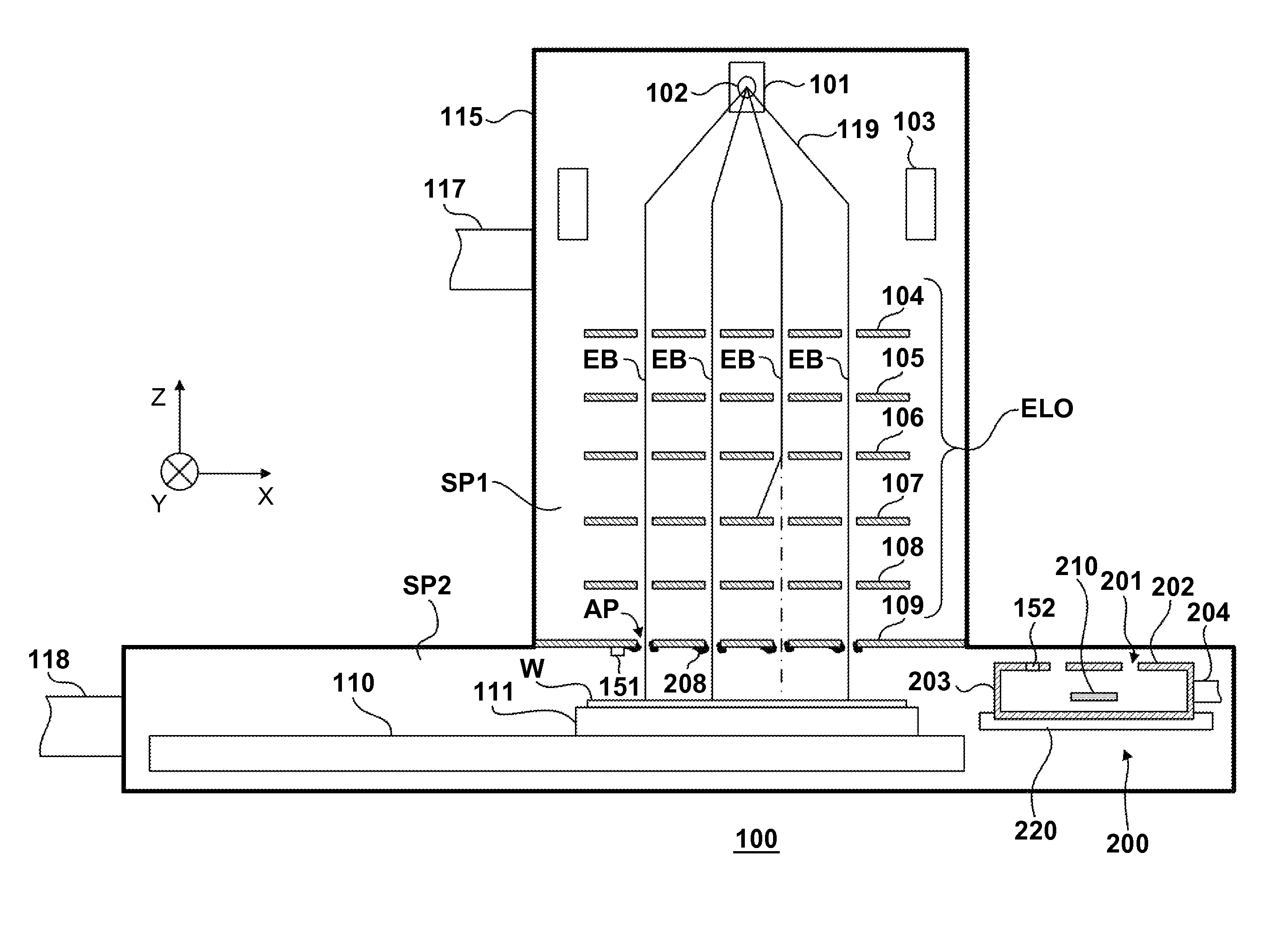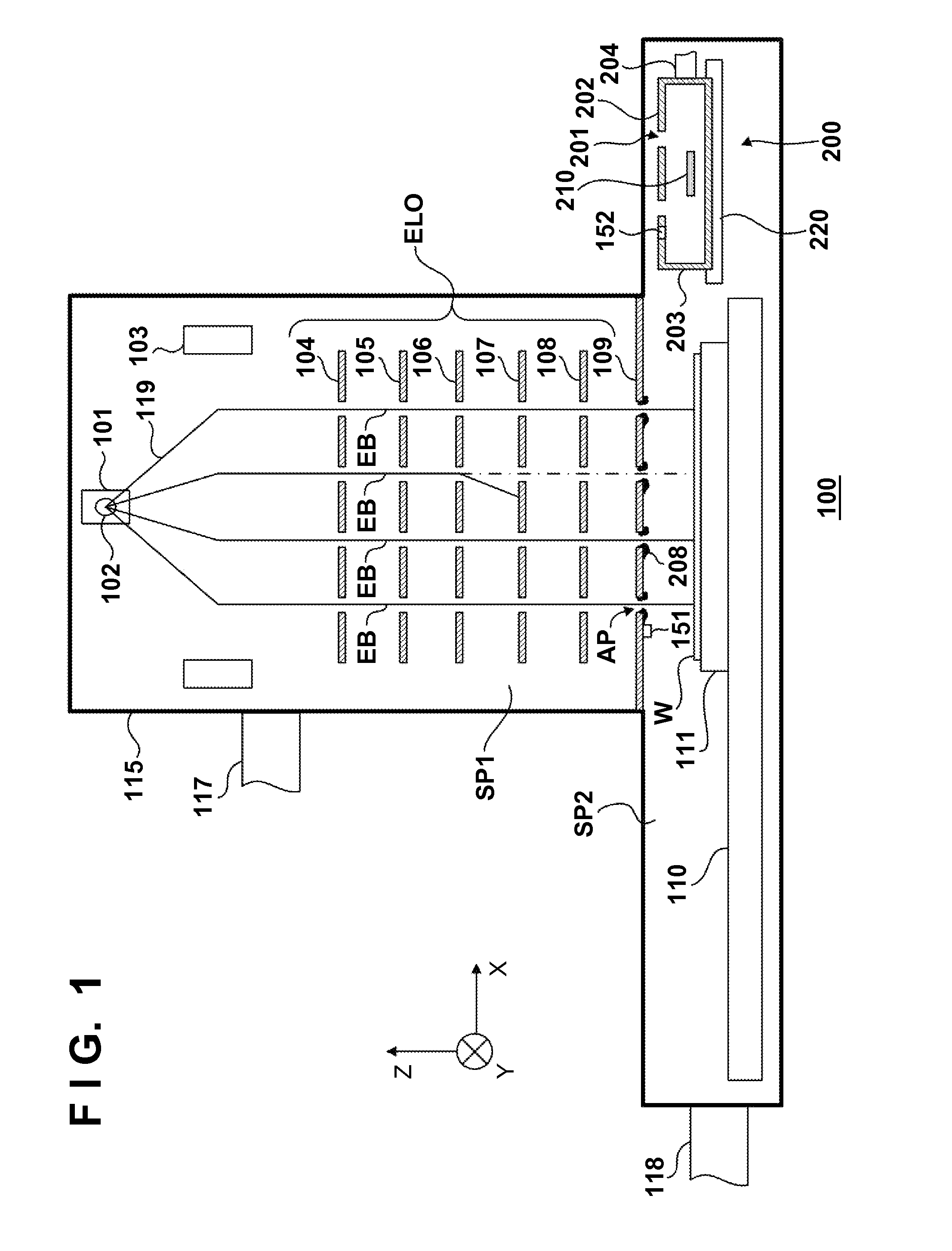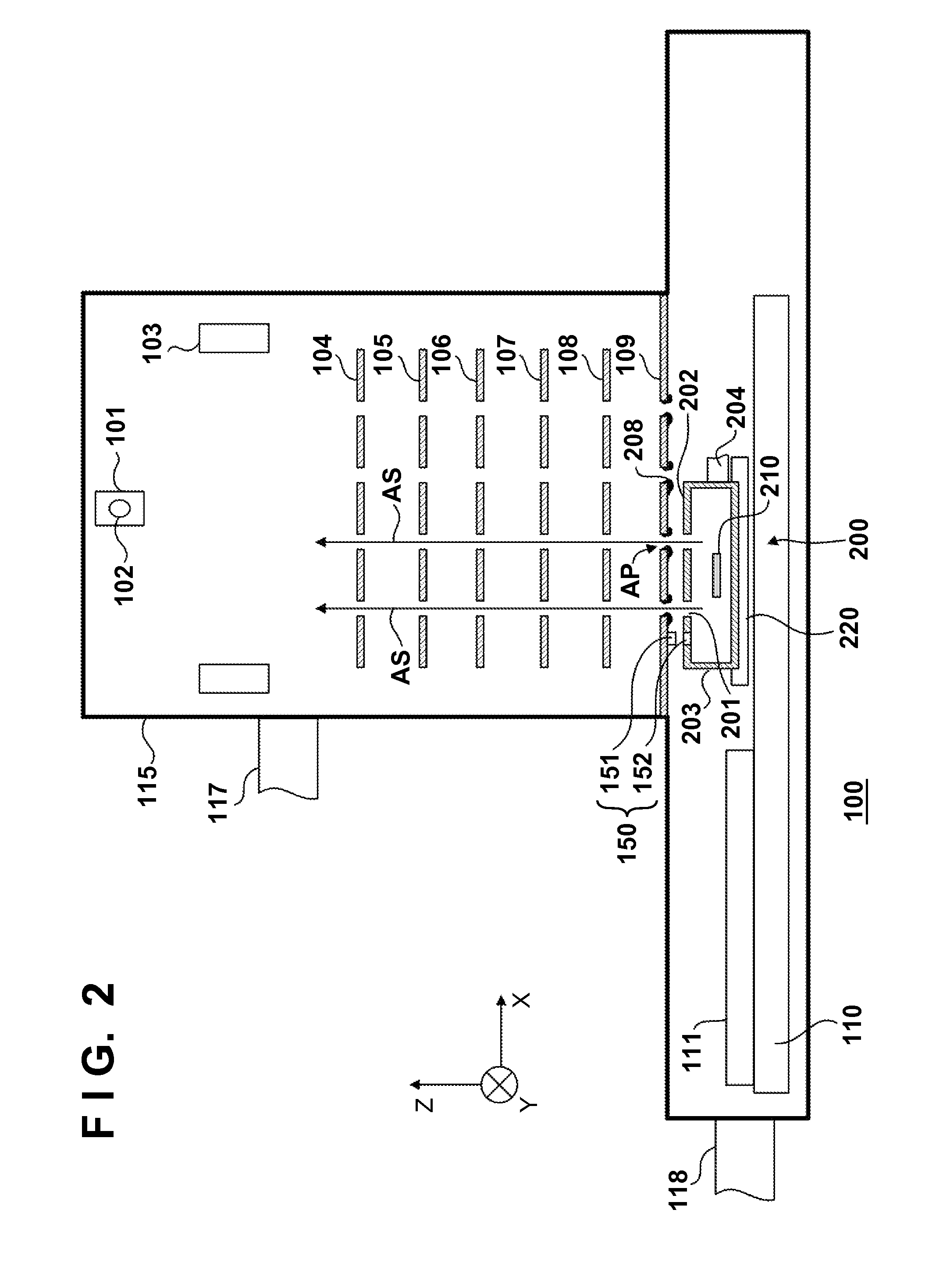Charged-particle beam lithographic apparatus and method of manufacturing device
a lithographic apparatus and charge technology, applied in photomechanical apparatus, instruments, nuclear engineering, etc., can solve the problems of prolonging the time required to reduce the pressure in the chamber after the end of cleaning, unable to satisfactorily clean the interior of the aperture, and unable to meet the cleaning needs of the aperture, so as to reduce the pressure in the chamber effect of rising
- Summary
- Abstract
- Description
- Claims
- Application Information
AI Technical Summary
Benefits of technology
Problems solved by technology
Method used
Image
Examples
example 1
[0038]Hydrogen gas is supplied from a supply portion 204 into a case 203 at a flow rate Q=1.35 Pa·m3 / sec so that hydrogen radicals are generated by an active species source 210 and emitted through emitting holes 201. The hydrogen radicals pass through apertures in an electrostatic lens array 109 (electrode plates 301, 302, and 303). At this time, some of the hydrogen radicals react with deposits 208 to generate a volatile gas. The volatile gas and hydrogen gas are exhausted from a chamber 115 via an exhaust port 117. Note that when the exhaust of those gases from the exhaust port 117 was regulated so that the exhaust rate is 0.1 m3 / sec on the side of the electrode plate 301, the amount of hydrogen gas exhausted from the exhaust port 117 became equal to that of hydrogen gas (containing hydrogen radicals) emitted from the emitting holes 201 of the case 203. The diameter of each emitting hole 201 is 60 μm, and the thickness of an emitting hole plate 202 is 300 μm. The diameter of each ...
example 2
[0043]In Example 2, the electrostatic lens array 109 schematically shown in FIG. 7A is cleaned using a cleaning unit including a case 203 having an emitting hole plate 202 schematically shown in FIG. 7B.
[0044]First, an origin position is determined in the same way as in Example 1. The case 203 is positioned so that emitting holes 201 in the case 203 and a group of apertures AP to be cleaned in the electrostatic lens array 109 are aligned with each other in the Or direction (X and Y directions), based on the array information of the emitting holes 201. Upon this operation, the group of apertures AP to be cleaned is cleaned by an active species AS emitted from the emitting holes 201. The case 203 is driven by a driving mechanism 220 in the first embodiment, and driven by a driving mechanism 110 in the second embodiment.
[0045]After the period of time in which the group of apertures to be cleaned is satisfactorily cleaned, the case 203 is rotated through π / 6 about the Z-axis so that the...
PUM
| Property | Measurement | Unit |
|---|---|---|
| pressure | aaaaa | aaaaa |
| pressures | aaaaa | aaaaa |
| thickness | aaaaa | aaaaa |
Abstract
Description
Claims
Application Information
 Login to View More
Login to View More - R&D
- Intellectual Property
- Life Sciences
- Materials
- Tech Scout
- Unparalleled Data Quality
- Higher Quality Content
- 60% Fewer Hallucinations
Browse by: Latest US Patents, China's latest patents, Technical Efficacy Thesaurus, Application Domain, Technology Topic, Popular Technical Reports.
© 2025 PatSnap. All rights reserved.Legal|Privacy policy|Modern Slavery Act Transparency Statement|Sitemap|About US| Contact US: help@patsnap.com



